First Decade C&S Lineside Petroleum Tanks . . . and Tank Cars?
12
















12
First Decade C&S Lineside Petroleum Tanks . . . and Tank Cars?
|
This post was updated on .
On the two recent Central City threads, there has been quite a bit of discussion as to the various petroleum storage tank(s), located just west of the new 1899 brick depot:
Over the years there were several iterations of these tanks: 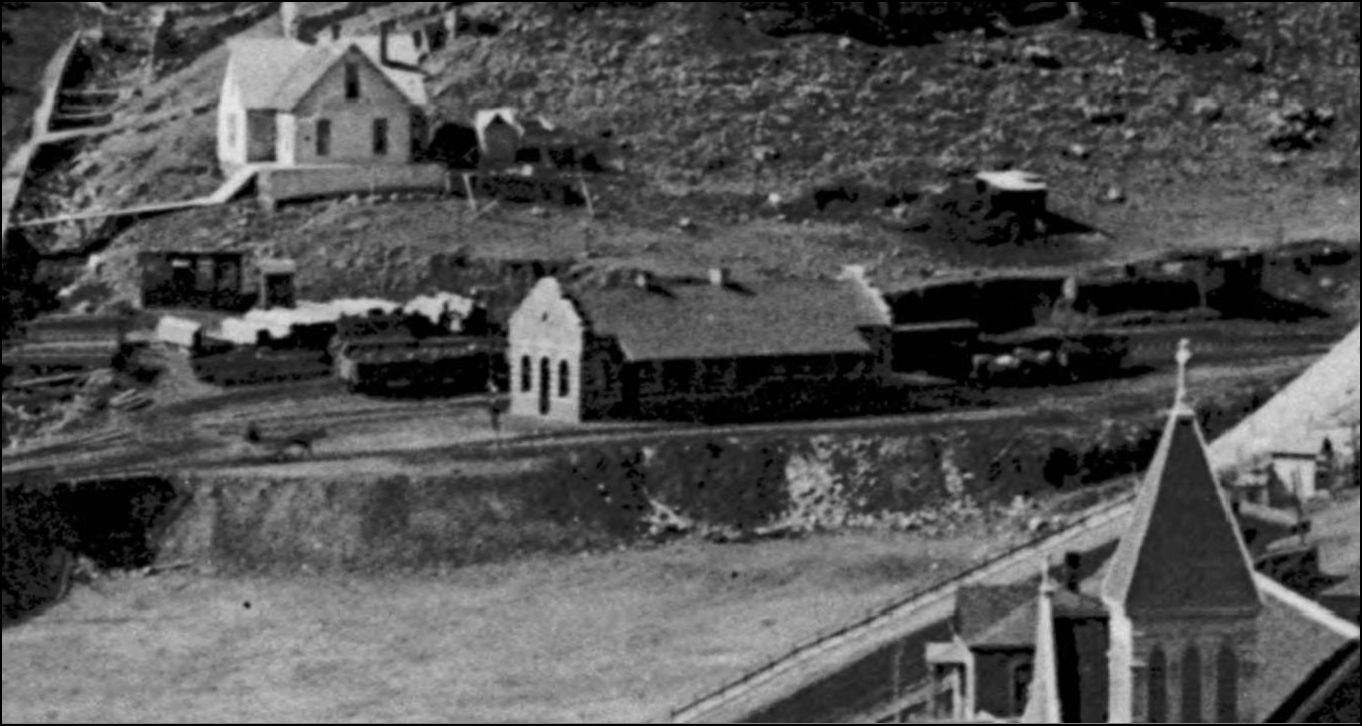 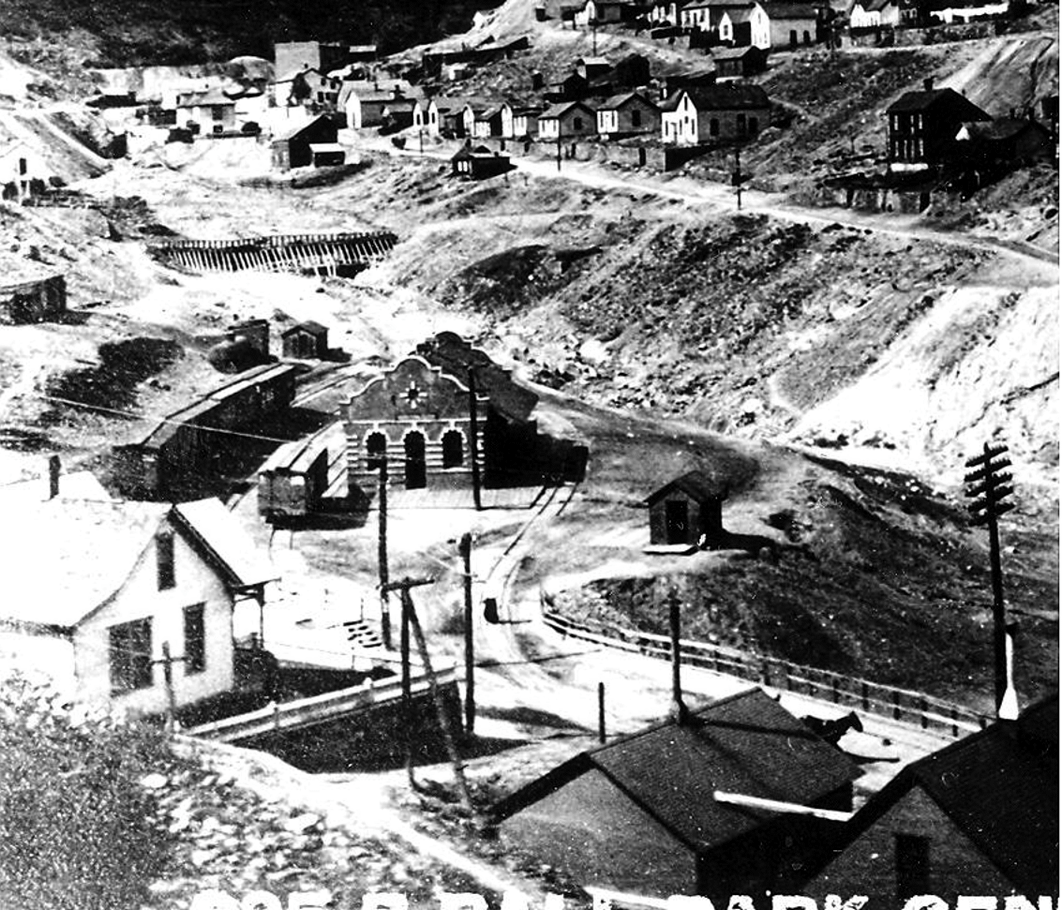 Single horizontal tank with one or two oil houses/sheds. 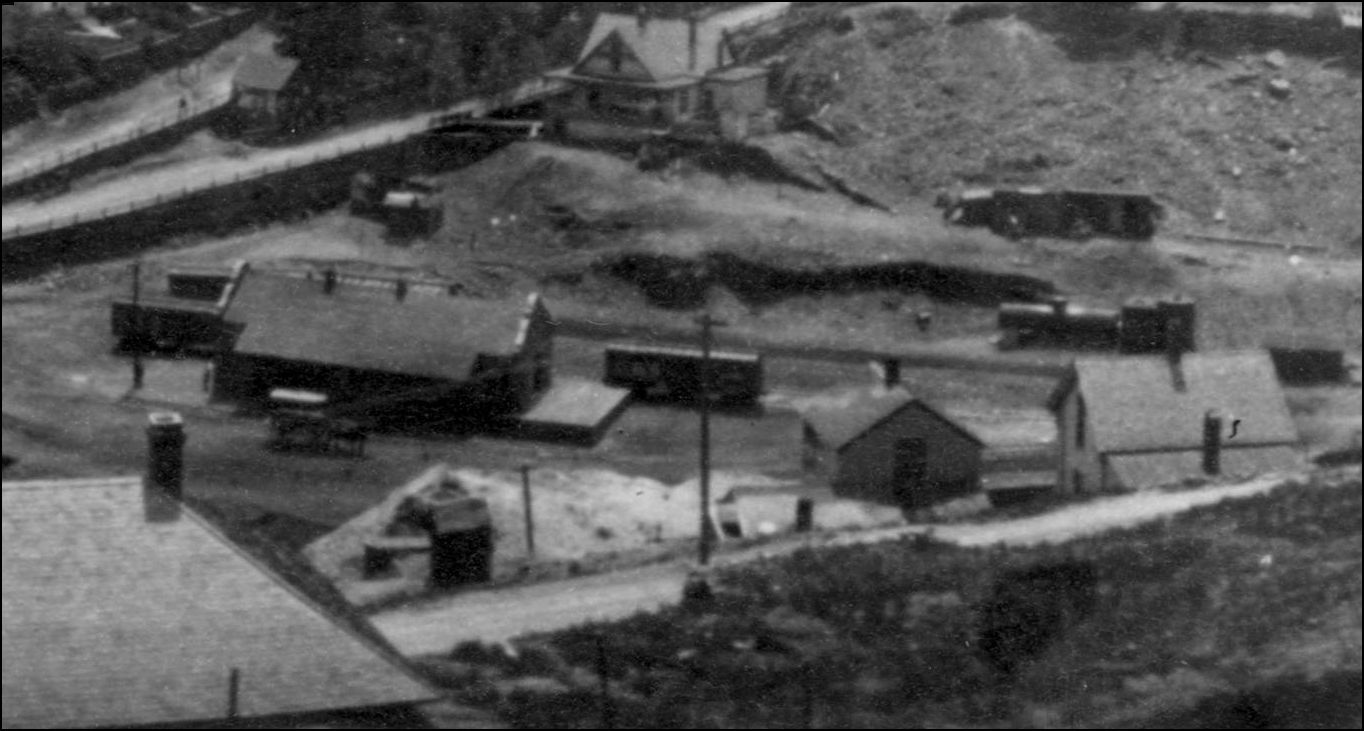 Single horizontal tank with two smaller vertical tanks. 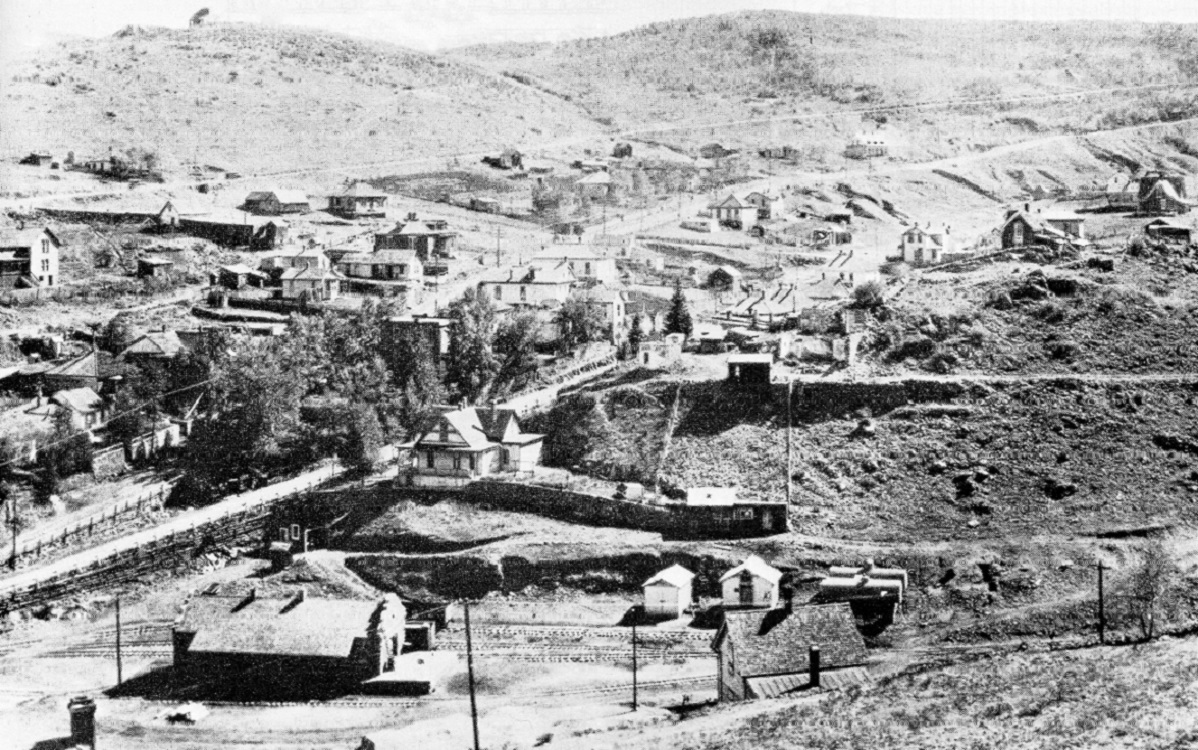 Two horizontal tanks and two sheds / oil houses. Eventually, the 1918 valuation maps indicate a tank farm of three horizontal tanks, side by side. What was stored in the tanks? Consensus is that it could have been kerosene (prior to widespread electrification, American homes were lighted by kerosene lamps), lubrication oil or gasoline, which began to be used to power mine/mill machinery beginning about 1900. As lubrication oils came in several grades/weights, it had to be separated (hence two, three and even four dome tank cars for transport)--lubrications oil, IMHO, was likely delivered in barrels or drums, transported in boxcars and stored in the "oil house" or shed. As to ownership and chronology, Dave posted some excellent info: Here's what I know about the evolution of the oil depot at Central: Per the Gilpin Observer, the first was reported built Sept 7, 1899, just west of the new depot. Prior to this I believe that only products in barrels or other non-bulk manner arrived in Central City, from ca1895 to 1899. Continental Oil business was increasing by March 3, 1901, as the Observer now reports a second tank has been put on the streets, by which I believe they are talking about a delivery vehicle, to handle the demand. On Feb 16, 1905, the Observer reports on Continental Oil asking the City Council to allow installation of a gasoline tank, next to the tank (single, not multiple) in use at the depot, but this request is rejected. A second tank must have been approved at some point after Feb 1905 (perhaps after 1907 as that calendar photo only appears to show one tank) because on June 21, 1917, Continental is reported in the Observer as making big improvements at the yard, including a new warehouse and three new tanks to replace those in use (this language implies multiple were in use by this date) plus also a gasoline tank. In some photos a squat vertical tank may be the gasoline tank. Rick had discovered the existence of three horizontal tanks when looking at the cradles left after abandonment--these cradles dated to 1917. Three tanks are also reported in a 1920 article and relative to one of the abandonment discussions of the Central City branch. Was Central City unique in having this petroleum facility? Nope. Recently Chris found a neat photo of the east end of the Georgetown yard, showing a similar facility: 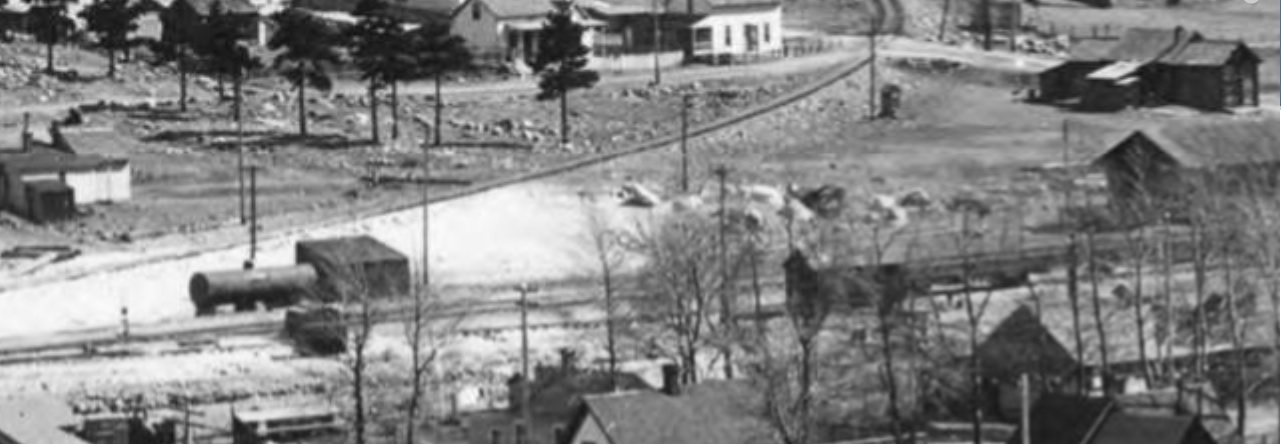 And a first decade photo of west Idaho Springs shows a single horizontal petroleum tank, located below grade, near the water tank: 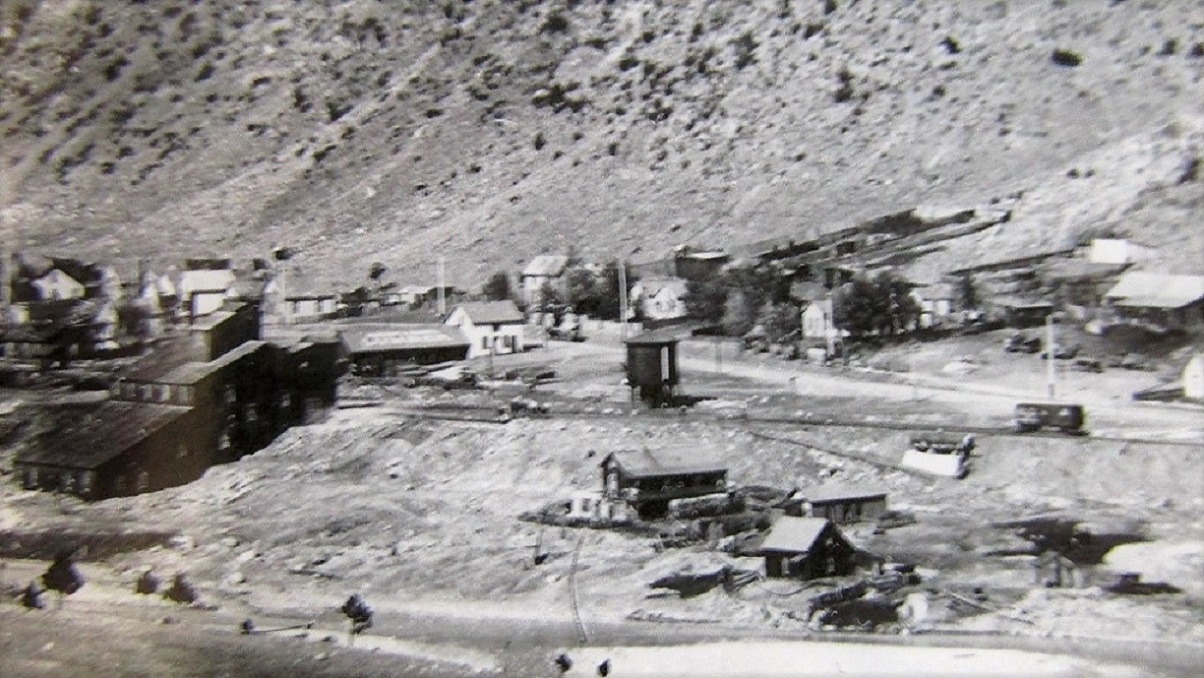 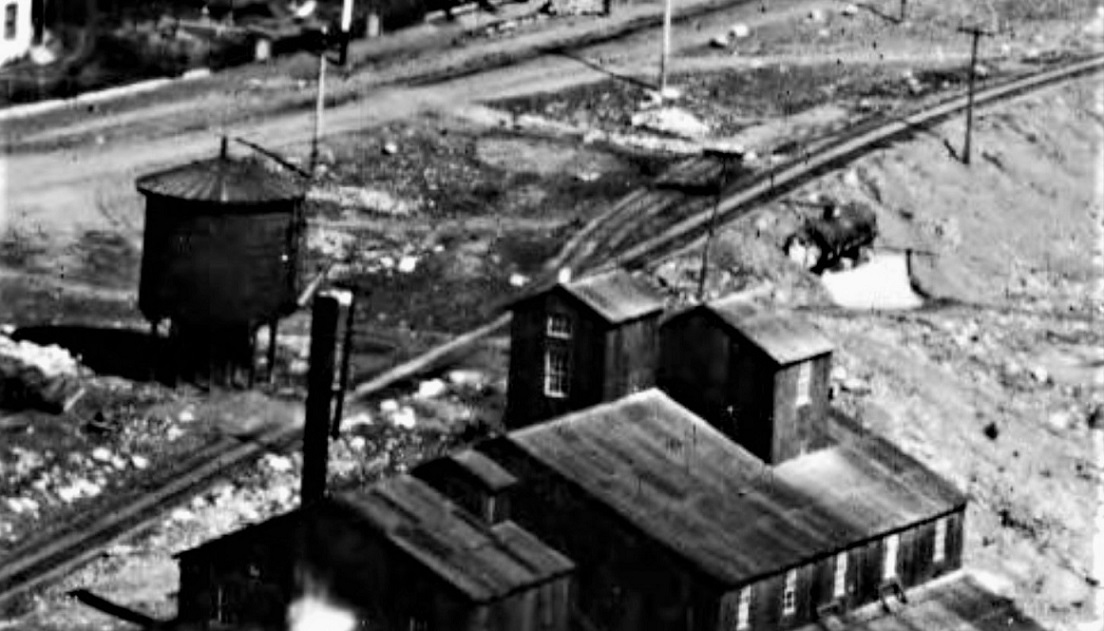 So were these lineside petroleum facilities unique to Clear Creek? No. In my other favorite C&S town, Breckenridge, Chris Walker document at east two different iterations of a similar petroleum facility, in photos taken from Shock Hill: 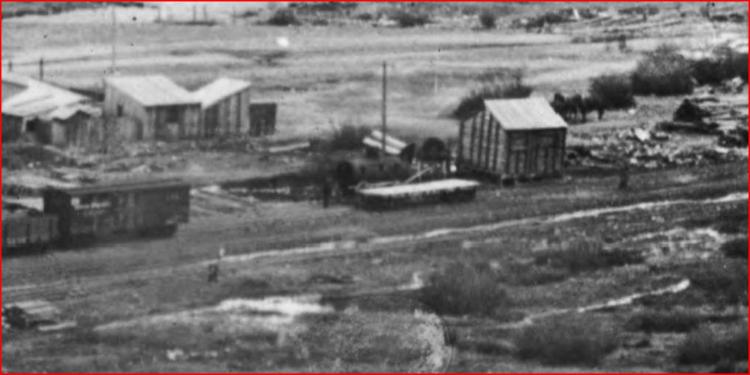 A single small tank. Is that a "coal" house or an "oil" house??  A large horizontal tank and obvious "oil house". Both of these photos are likely pre-C&S, as all of the rolling stock in the expanded views is still lettered for Union Pacific (DL&G). The tanks disappear by early first decade. Why? I propose that they were kerosene storage tanks that allowed Breckenridge residents to light their homes. The Gold Pan shops completed their electric generating plant and by 1902 and contracted with the city fathers to provide electricity for the entire city. I suspect that residential lighting rapidly became electrified, removing the market for kerosene. And how was the bulk petroleum, stored in these tanks, transported? I refused to believe that the product was transported in barrels/drums in boxcars, and then each barrel opened and pored into the storage tanks. Tank cars, as early as the 1890s, must have ben in use. As Dave summed it up: As to the tank cars, I share the same question as already stated. Looking at the ORER and annual reports, there is no mention of tank cars, except water, in the early C&S years. Unless the oil tanks were Continental owned and not listed on rosters. I sure would like to understand what is going on here. My speculation had been that only barrels and other packaged products had been shipped in boxcars. But how the heck did they get the bulk stuff up there? How, indeed? I invite all to search and share photos of any similar first decade petroleum facilities. I suspect that Leadville received its oil products via the standard gauge D&RG and Colorado Midland. Other C&S locations that might justify such facilities very early in the 20th century might be Golden, Black Hawk, Silver Plume, Morrison, Jefferson, Como, Alma, Garos, Buena Vista, and Gunnison. Anyone have any pics of such?? Some thoughts on c1900 tank cars next . . . 
Jim Courtney
Poulsbo, WA |
Re: First Decade C&S Lineside Petroleum Tanks . . . and Tank Cars?
|
Surely there would be Tankcars showing up in pictures at the time if they were in use? I'd think the volume of traffic just wasn't there yet, at that time to warrant tankcars per se, Boxcar loads of barrels decanted most likely.
There was considerable tonnage of Gasoline brought into NZ during the '20s in tincans, 2 per box. The local hardware store demolished in the late 80's here had an entire loft full of storage shelves all made from those boxes. As for the "first" picture of Breckenridge, well that's a Boiler, I never realised it at the time, appears to have been unloaded from the Flatcar alongside. The 3 chairs on the side give it away. I had edited my post back in 2018 http://c-sng-discussion-forum.254.s1.nabble.com/Another-Oil-tank-tp1112p1227.html to reflect that realisation.
UpSideDownC
in New Zealand |
Re: First Decade C&S Lineside Petroleum Tanks . . . and Tank Cars?
|
In reply to this post by Jim Courtney
Jim, so glad you started this thread. I've been diving further into the Central City situation but you've got most of the good stuff I've found in your synopsis.
So I'll share what I know of Black Hawk in the 1920s-1930s. First, I've not found formal evidence of an oil depot in Black Hawk between 1925 (abandonment of the Central City branch) and summer 1940 (when the yards were moved to lower Black Hawk due to the looming placer dredge arrival). There is talk during the abandonment of the Central City yard impacting the oil depot but nothing I've found discusses any tanks set up in Black Hawk. But zooming in to an Otto Perry photo, DPL OP-6261, I see a hint of the end of a tank perpendicular to the track, between the Coors beer warehouse and the old Gilpin Mill, roughly where the hay barn had been. This track was an extension of the track on the south side of the ore dock. You can just make out the oval end of what appears to be a silver tank. This photo is March 1939. I see this tank in no other photo. 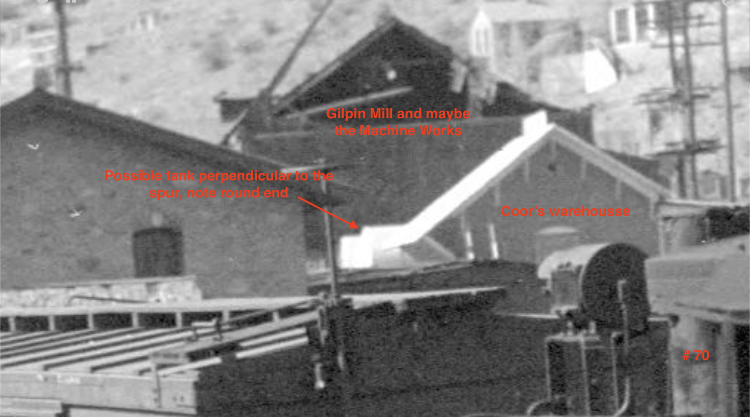 This led me to the Valuation photos in the Abott/McCoy/et al Colorado Central book, on pages 177-182. In two of these we see a silver tank car parked in the location seen in the above photo. Here's the better of the two in the book: 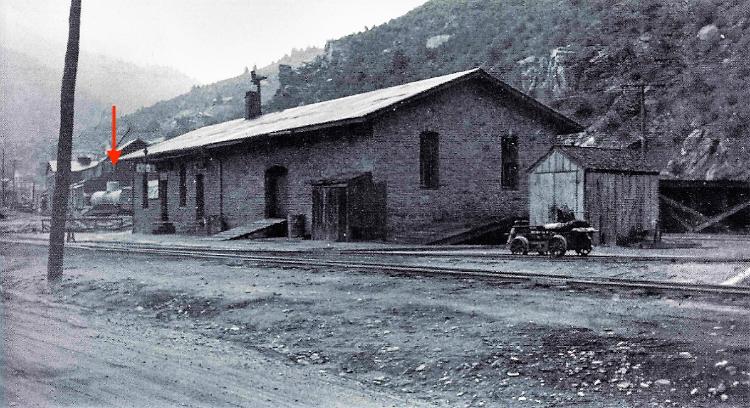 There has been discussion about this photo and the silver tank car, in a thread on this forum. The possible tank seen in the Perry photo is blocked by the depot, if it's there. It's not visible in the other photo showing the tank, possibly cropped off by the left edge of frame--again, if it's there. An aside: As I delve deeper into 1930s Black Hawk, which is an absolutely insane distraction, I'm increasingly of the opinion that these Valuation photos are earlier than 1939--1 to 3 years earlier, at least. I think that date refers to the publication date, not the survey date. I'm basing this on details seen in these Valuation photos compared to other 1937-1939 photos and also the fact that these surveys would occur several years before publication. Can anyone confirm an actual date of the survey or photos, not just the publication date?
Dave Eggleston
Seattle, WA |
Re: First Decade C&S Lineside Petroleum Tanks . . . and Tank Cars?
|
This post was updated on .
In reply to this post by Chris Walker
I'd think the volume of traffic just wasn't there yet, at that time to warrant tank cars per se, Boxcar loads of barrels decanted most likely.
I dunno, Chris. I'm old enough to remember gasoline, and other solvents, being shipped in 5 gallon tins as you described. And as a lad, I watched local farmers visit the town Texaco distributor and haul off 55 gallon drums of gas and diesel for their tractors and farm machinery. But if the petroleum products were delivered by the C&S in boxcars containing barrels/drums/tins of the stuff, why wouldn't the local distributor just sell the product to the local customers in those containers? Why install large steel tanks, then manually pour product from barrels and steel drums into the tank? And then turn around and sell aliquots of the product to local residents or mines, and have to repackage it in some type of new container? I'm sorry, it just doesn't ring true to me. Surely there would be tank cars showing up in pictures at the time if they were in use? Would there be? I mean, it took me 7 years to find a single photo of a freight train at Dillon, and even then I didn't recognize it as such. Freight car authorities, like Bob Sloan and Bob Stears, state that written records indicate that COLX/CONX tank cars 1, 5, 8, 10, 13, 14, 15, 22 and 35 were used on the C&S. I can only think of photos of CONX 5, 8, 15 and 35. The earliest was from about 1930, most of them at or after abandonment of the South Park mainline. So I don't think we can exclude 1st decade tank cars, whether they were cars under lease by Conoco / Texaco, or actual C&S narrow gauge tank cars (or small standard gauge C&S cars, re-trucked to 3 foot gauge in Denver). Anyways, I'm trying to justify a 1901 to 1909 tank car to deliver S scale petroleum products to Central City and Breckenridge --work with me here! 
Jim Courtney
Poulsbo, WA |
|
In reply to this post by Dave Eggleston
Interesting discussion that perhaps clears up some things. The Idaho Springs tank location explains what was in one of the Up Clear Creek on the Narrow Gauge articles that shows a tank car unloading on the ground.
On the other hand the Black Hawk Tank Car raises some questions- There was a lumberyard there near where the tank is parked- could that be where a tank was? It would make sense from a business standpoint. There are not a whole lot of photos of that area that are not early or taken from angles that don't show much. The lumberyard was something that regrettably I did not have space for in Black Hawk due to the depth (or rather lack therof) in my scene.
Jim Curran
|
|
I was digging through DPL on photos of the lumberyard in Black Hawk. The spur for it would have been back to the left Most of the photos for it would be early and there is nothing showing in a later Otto Perry photo. What if the oil dock was near the original ore dock location?
Jim Curran
|
Re: First Decade C&S Lineside Petroleum Tanks . . . and Tank Cars?
|
This post was updated on .
Jim, no oil depot is shown on the maps I've seen, the newspapers I've seen are silent on it and the only hint is one March 1939 Otto Perry photo (DPL OP-6261) where a tank may appear to be sitting perpendicular to the track, between the Coors warehouse and the Gilpin Mill. See my comments and annotated picture detail earlier in this thread. That spur was the old Gilpin Mill track, looking to be in use as a team track at the time. That spot is the same location we see the tank car in the ca 1933 photos in the Colorado Central book by Abbott, page 178 and 179 I think, but no oil depot can be made out in the photos in that book.
I'm increasingly of the mind that if there were tank cars sent up to Black Hawk after the Central City branch was abandoned in 1925, they were unloaded directly into trucks from a team track--but I have no solid evidence of the truth of this, just basing it on the fact that it was done elsewhere. "What if the oil dock was near the original ore dock location?" I'm not sure which ore dock are you talking about here--the one built in the '30s by the depot? If so, the spot I mention above was a couple hundred feet to the west of that dock, so was close. There was a lumber yard on the other side of the tracks, off of Main Street between the feed store and the machine shop. At times in the early years of the line lumber was stored next to the hay warehouse on the north side of the tracks but I don't see much evidence of this in the 20th century, there wasn't the space.
Dave Eggleston
Seattle, WA |
I had run into the same issues in building Black Hawk no real mention and location on an oil dock so I did not add anything. We had a discussion on this on the C&S FB group too. One of the thoughts was there was apparently tank cars coming but after the Central City branch was abandoned where were they going? In this discussion my quick thought on the lumberyard was wrong- the angle of where the tank car is was completely wrong. Figured that out after a couple of minutes looking at it. The lumberyard that I was referring to was the one on Main. I had modeled the false front building next to the machine shop but did not model the larger feed store due to space issues. (My Black Hawk scene is only a foot deep) To be honest I had always scratched my head about whether the lumberyard was part of the false front building or the feed store. The sanborn maps almost look like the false front building is part of it but the fence lines and stacks sure look like it is part of the feed store. Anyhow I digress as there appears to not be any sign of a tank and the angle is wrong. The ore dock I was referring to was the original one "behind" the station that was constructed (early 30's or so) after the Central City branch was abandoned so that the mines could load in Black Hawk. That was reasonably near where the tank car was spotted. It would also seem to make some sense that with the Central City oil facility gone they needed to unload somewhere. I suspect we will never know for sure on this. I have as yet to add the ore dock- It will be on the very edge of the layout and will be only a slice. Tempting to add a small tank...........
Jim Curran
|
Re: First Decade C&S Lineside Petroleum Tanks . . . and Tank Cars?
|
This post was updated on .
Jim, if the Otto Perry photo does indeed show a storage tank perpendicular to the Gilpin Mill spur, this is very roughly where it would be on your layout (photo stolen from FB group), not quite accurate because of the selective compression you're forced into in your space which pushes the Boiler works and machine shop close to the station:
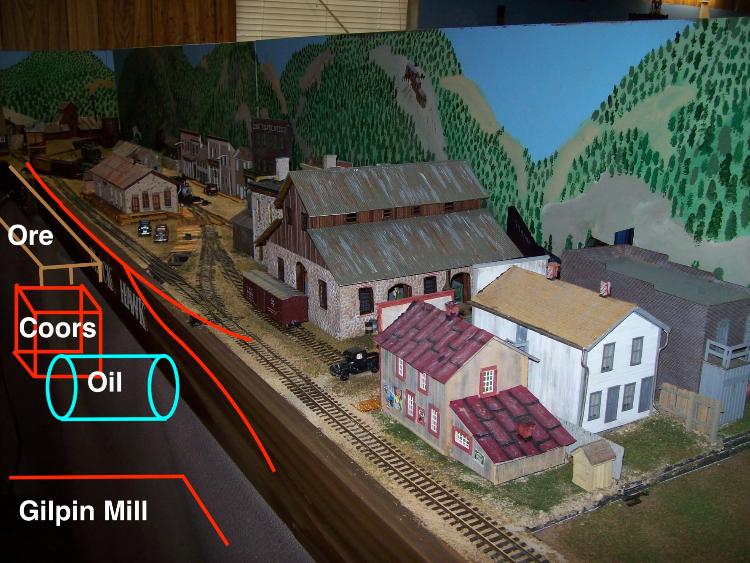 The truck in front of the Colorado Shoe store is on Black Hawk Street and the tank would be opposite the machine shop on Main Street in the real world. I currently think the hay warehouse didn't last after the late 1920s. The tank sits roughly where it was. The 1922/revised 1929 map in CRA #10 shows this spot, the hay warehouse, as a feed/coal dealer, at least in 1922. It's tempting to think they added oil there after 1925--tempting but there's no proof at the moment. And remember that my interpretation of a tank in Perry's photo is very open to debate.
Dave Eggleston
Seattle, WA |
|
Selective compression was my Achilles heel on this- The scene is only a foot deep and is "found space" by slightly narrowing the aisle on the other side. There was no depth for the lumberyard and the length is also off- two buildings and some spacing was eliminated in the background flats. All of this forced the Boiler works and machine shop closer. It also forced me to model the scene flatter than the prototype. I also lost the additional sidings between the station and the aisle.
My plan was to use one of the AM Models long loading docks as a stand in on the back station track on the fascia board. It's of course too narrow (but would serve as a "slice" of the dock) and a little short- but if I bump it in the narrow aisle it is much more likely to survive that a scratchbuilt one that might wind up a pile of toothpicks........ 
Jim Curran
|
Re: First Decade C&S Lineside Petroleum Tanks . . . and Tank Cars?
|
This post was updated on .
Okay, let's talk about first decade C&S tank cars, if they existed.
We know from Dave's research, that the first horizontal storage tank was in place in the Central City yard by the end of 1899. Similar tanks existed at Idaho Springs and Georgetown. A tank at Breckenridge predated the creation of the C&S. Dave documents that the Central City bulk storage tank(s) were owned by Conoco; the others likely were as well. In an era that predates common use of the automobile, the most likely commodity stored was kerosene. The local Conoco dealers would sell and deliver, by tanks on wagon, kerosene to residences and commercial buildings for the purpose of lighting, just as commercial coal dealers would sell and deliver coal for residential and commercial heating. I believe that there must have been tank cars plying the 3' gauge rails to haul kerosene up Clear Creek and perhaps over Boreas to Breckenridge. There are four options as to the ownership of such tank cars, as I see it: One: C&S narrow gauge tank cars existed in the first decade, until now undiscovered. Two: One or more small C&S standard gauge tank cars were re-trucked at Denver to haul bulk kerosene on the three foot lines. Standard gauge cars of 1890-1910 vintage were not much larger than narrow gauge cars, the tanks cars near the same size. Three: As Dave posited, there were COLX/CONX tank cars (narrow gauge or standard gauge), leased or owned by Conoco, of which we are unaware. One or more rode on narrow gauge trucks. Four: Conoco consigned bulk petroleum products from the Florence and Denver refineries in tank cars owned by separate tank car companies (i.e. Union Tank Line); one or more were re-trucked for narrow gauge use. As to the first option, at least three C&S narrow gauge tank cars are known to have existed in the first decade. Derrell Poole in Grandt's Narrow Gauge Pictorial VIII, states that older Peninsular 30' flat cars 1055 and 1066 were converted to tank cars in April of 1902. The date coincides with the C&S experiments with fuel oil to power the rebuilt Cooke 2-6-0s, but Derrell states that the June 1904 Annual Report indicates that they were flats equipped with water tanks. In 1906 these two cars were renumbered 01055 and 01066, consistent with MOW service and disappeared from the roster by 1908. A third car was a "flat on tank" conversion of brand new flat car 1097, with ASF trucks and bolsters, built in March 1902. In August 1903 a tank was mounted on the car. It continued to carry its revenue number 1097, but disappeared by 1906. Could this third car have been converted for the purpose of moving bulk petroleum products? Who knows, but at least such C&S narrow gauge cars existed. The second option IMHO is the most likely. A while back, Dave was kind enough to share with me copies of the Official Railway Equipment Registers for the C&S railroad equipment, from 1899 to 1907. He also shared information from the ORERs for the UPD&G from the late 1890s. Studying these documents there is no listing for any kind of tank car in the 1890s and the first three years of the C&S. Then, in the May 1902 ORER, two standard gauge tank cars first appear, numbered 0715 and 0712. They are described as 60,000 lb. capacity cars, that were 34' long and 9' wide. As there were 10 flat cars of the same capacity and dimensions, numbered 716-726, these two tank cars were likely "tank on flat" conversions. The "0" prefix suggest they were conversions for MOW service. But, by the end of the year of 1902, for the first time, twelve standard gauge "tank cars" appear, numbered 950-961. They are described as being of 50,000 lb. capacity, 32 feet long and 9 feet wide. The tanks had a capacity of 6,730 gallons. In rereading the ORERs from the 1890s and through 1907, there are never flat cars listed of these dimensions or capacities. So these 12 tank cars were either new builds, or the C&S acquired these cars, as a group, that had been built earlier, for another entity. I think these 950 series tank cars are the most likely candidates for use on the narrow gauge. Fortunately, we know how they looked: DPL: Z-8902: https://digital.denverlibrary.org/digital/collection/p15330coll22/id/84306/rec/2 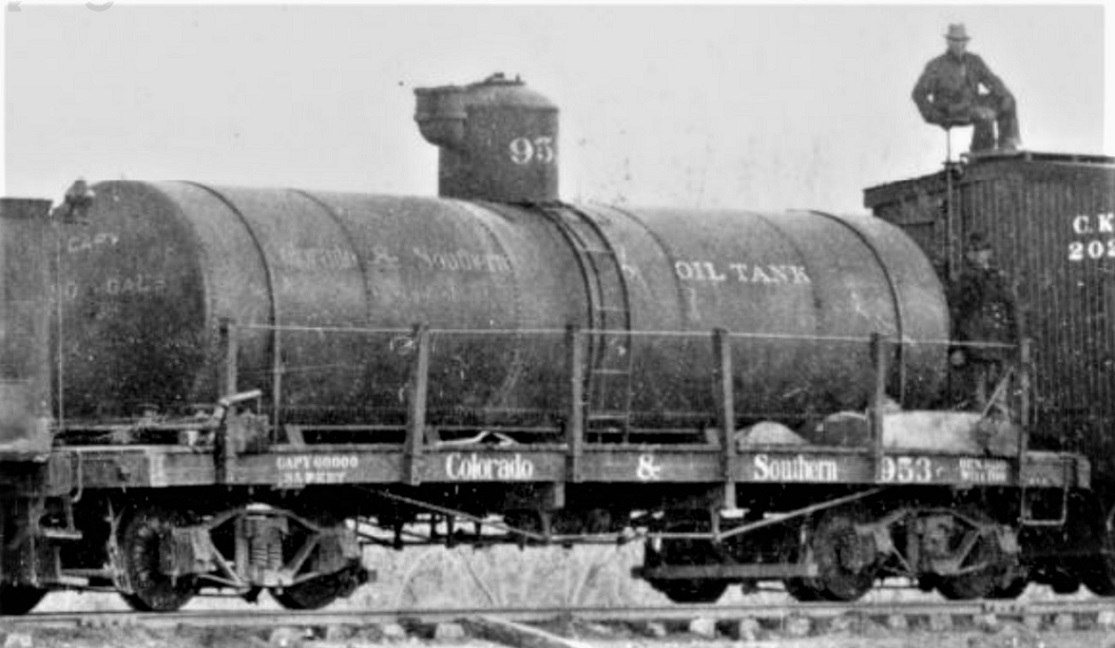 This is the only photo of a C&S tank car in the first decade that I've found. Though standard gauge, C&S 953 looks very much like narrow gauge tank cars used by the Pacific Coast, the Nevada County Narrow Gauge and the N-C-O. C&S 953 appears to be similar in size. The vertical stakes that form the "stanchions" for the side handrails appear to be 4x4s. If 8 inches is subtracted from the extreme width of 9 feet, the width over the side sills would be 8'-4". Folio drawings for the 1902 narrow gauge flat cars show a width of 8 feet. So if one or more of the 950 series tank cars were re-trucked in Denver for narrow gauge use, the width would likely not be excessive. The "Colorado & Southern" lettering is 8" tall on the 1902 coal cars, so that would suggest tank car 953 had side sills of 9 to 10 inches tall, needle beams of 4x8 inch dimensions and queen posts of about 10". Since the weight of the car, with its load, is centered along the longitudinal center of the car, it think it likely that the car would track well on narrow gauge trucks. A model of this car on narrow gauge trucks would be a plausible addition to the Central City yard, to deliver kerosene to the Conoco bulk storage tank. But wait, there's more! Study the details of the tank on C&S 953. The tank appears to be constructed of five courses, riveted together. The dome is relatively tall, is tapered (not rounded) at the top, with a flat hatch on the dome top . The most notable feature is the "Siamese-twin" double relief valves on the dome. Does the tank look familiar? To me, the tank on C&S 953 looks near identical to the tanks on the later CONX cars 12, 13 and 14, as Bob Stears drew them in his plans published in the Gazette. And here is where we dip our toes into option number 3, above. In the plans, Bob Stears documents that when rebuilt in 1919 by the D&RG, three old COLX tanks were used. The tanks varied in length from 26'-3" to 28'-3". Bob found documentation of the actual Conoco tank numbers: Conoco tank number 571 was used in the rebuild of COLX 12, tank number 559 (the longest) was used to construct COLX 13 and Conoco tank number 568 was used on COLX 14. So let's veer into the land of extreme speculation: If Conoco built/owned the tanks used, and had assigned numbers to the tanks they owned, is the tank on C&S 953 above a Conoco tank? In an era of "tank on flat" tank car construction, is it possible that Conoco owned a large number of small capacity tanks and negotiated with individual regional railroads to supply the flat car (or car underframe) for use on their rails. The railroad might then have mounted the Conoco tank to its own flat car/underframe in the railroad shops, the resulting tank car carrying the railroads reporting marks and numbers. That might explain why tank cars that were actually owned and lettered for Conoco don't actually show up until about 1913. So, are the C&S 950-series tank cars of the first decade Conoco owned tanks mounted on C&S owned underframes?? If Bob Stears has any further information on the early Conoco tanks I'd love to see it. And if any of you C&S historians have copies of the C&S standard gauge freight car folios, I would love to see if folios for tank cars 950-961 actually exist. So if the Conoco tank at Central City was in place in 1899, and the C&S tank cars did not exist until 1902-1903, how was bulk petroleum delivered in those earlier 3-4 years? That leads to option four, above. Union Tank Line had large numbers of small standard gauge tank cars: 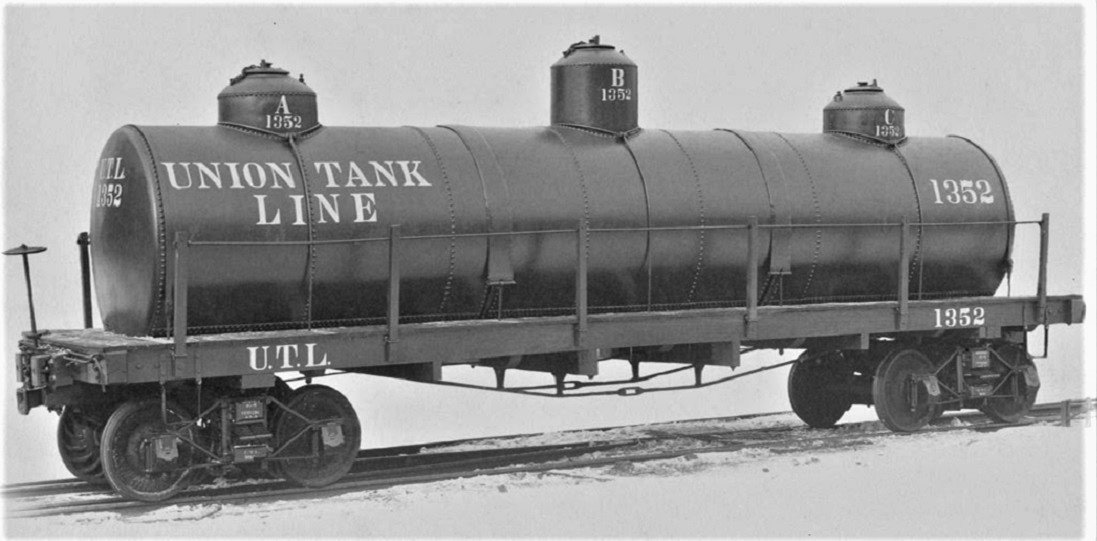 The UTLX tank cars in the 1890s and first decade were quite similar in size and construction as the C&S 950-961 cars. I think that they, too, could have been re-trucked in Denver for use on Clear Creek 3' gauge rails without any operations thoughts. I realize that there is a lot of speculation/conjecture in this post. Any thoughts or more information?? 
Jim Courtney
Poulsbo, WA |
Re: First Decade C&S Lineside Petroleum Tanks . . . and Tank Cars?
|
Jim, you've covered a lot in that post!
There's another option for getting bulk to Central City in the 1899-1910 period: teaming or trucking it in. As unlikely an option as this may seem we have to account for all possibilities. Rudnick published no evidence of petroleum product tank cars on the DL&G or UPD&G which could point to tank cars on these lines as a pure C&S event. Here is what I have found for the 1899 to 1908 period, yes there are lots of gaps (fill them in, please!): 1902: Poole (Pictorial Vol VIII) states flatcars 1055 and 1066 got tanks; 1097 also was converted but isn't reported officially reported as a tank until 8/20/1903 (the wording in the book is a bit confusing). 1903 June ORER: first ORER reporting of tank cars on the narrow gauge--2 cars in the 1055 to 1066 range, 30' 40k# cars. 1903 Dec ORER: second ORER reporting of tank cars on the narrow gauge--2 cars in the 1055 to 1066 range, 30' 40k# cars. 1904 June 30 C&S Fiscal Report: 2- 40k# flatcars equipped with water tanks. No numbers given. 1905 June 30 C&S Fiscal Report: 2- 40k# flatcars equipped with water tanks AND 1- 50k# flatcar equipped with water tank. No numbers given. 1906: Poole (Pictorial Vol VIII) states cars were renumbered 01055 and 01066. To me this indicates they're in company-only use. 1907 June ORER: 2 tankcars, 01056 and 01066. Yes, that first number is not a typo on my part. It may be an ORER typo. I don't know. 1908: I have a note from Rudnick that only 01056 was on the roster--note the number again, I believe it is from the March 1908 ORER. Poole states all tanks are gone around 1908. From this it appears that there were 1-3 flatcars with tanks in company water service from 1902 to 1909. If the C&S was using tank cars to move petroleum or chemical products on the narrow gauge in the first decade, I see three options: 1) a CONX/COLX-owned tank on a C&S-owned flat; 2) a complete CONX/COLX owned car; 3) a re-trucked CONX/COLX standard gauge car. That final option seems crazy on the Central City branch, but who knows. The photo of the 950 series tank car shows both tank and flat lettered for the C&S. This is interesting, the railroad name lettered on the tank. That's not what I expected to see. This hints at the C&S building cars for the traffic quite intentionally and in partnership with Continental. Thinking about the ownership/reporting of tank cars on the narrow gauge C&S, I'm reminded of the Nevada Central Railroad which I've also researched for a long time. The NC did not own the tanks on the tank cars running on the line, the tankcars showed up as complete units with flatcars from the predecessor lines that ran them. In fact when one of the NC tanks burned, the NC provided a replacement flatcar. So clearly Standard provided a tank to be placed on company-provided flats. And when the NC was abandoned a couple of the tank cars moved on to other roads, like the NCNG, along with the flat under the tank. This is why I consider that the CONX cars were not necessarily owned by the C&S so weren't reported on a C&S roster. If the C&S took a tank and put it on a flat, I would expect it would be reported as a flat because there was an ownership interest--and likely no mention of a tank was made. So is there any chance that CONX provided the C&S with a complete car/tank package? Nothing to support this idea, but it's not impossible.
Dave Eggleston
Seattle, WA |
Re: First Decade C&S Lineside Petroleum Tanks . . . and Tank Cars?
|
This post was updated on .
Derrell Poolle specifically mentioned these SG Tankcars for Loco Fuel(i.e. private use, not commercial).
see: http://c-sng-discussion-forum.254.s1.nabble.com/Proof-that-not-only-the-Eating-House-was-built-on-stilts-at-Forks-Creek-tp948p994.html
And for Black Hawk: I can add this Sanborn Map 1895. This facility disappeared along with the Mill/Smelter as well based on other photos. I take it this was fuel for the furnace, not for use elsewhere, the siting of the siding and tank is interesting for what it is. Location is alongside the converted Mill building first used as the C.C.R.R. Depot. 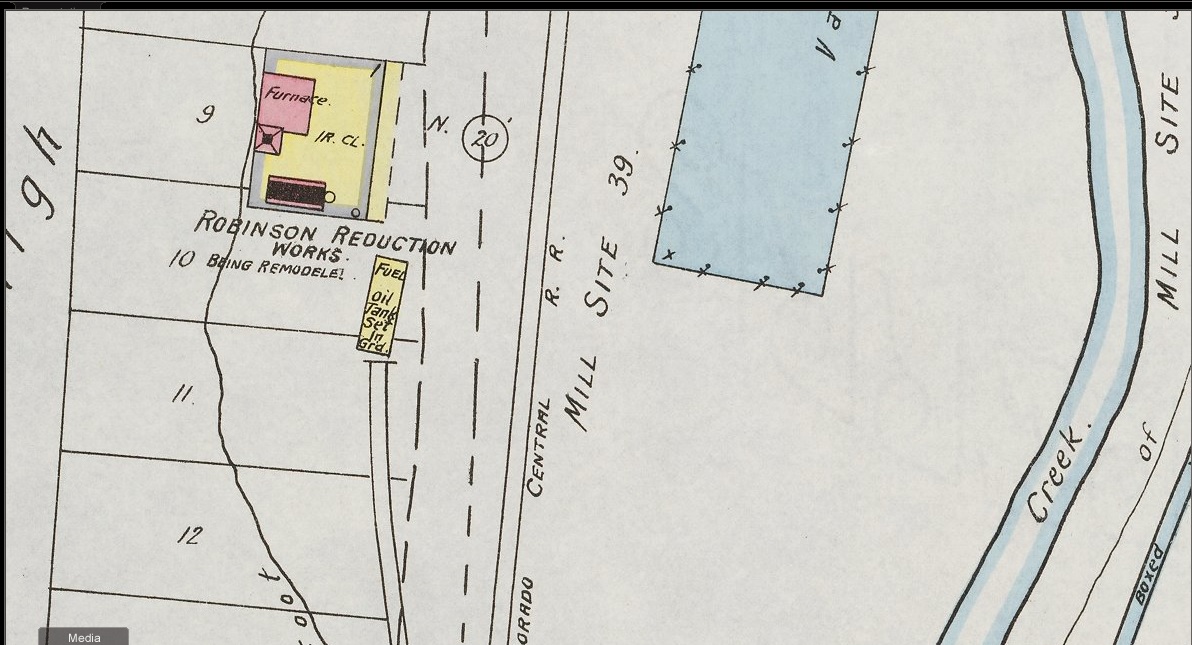
UpSideDownC
in New Zealand |
Re: First Decade C&S Lineside Petroleum Tanks . . . and Tank Cars?
|
This post was updated on .
Wow, Chris, great spotting on that one.
Clearly an early adopter situation. That mill and switch aren't seen on the 1890 Sanborn--lining the 1890 and 1895 maps up the switch should just make it onto the New York Mill detail section. On the 1898 C&S map it's shown as "Old Smelter" and there is no spur. It's completely gone on the 1900 Sanborn. Of course Sanborns can be iffy.
Dave Eggleston
Seattle, WA |
Re: First Decade C&S Lineside Petroleum Tanks . . . and Tank Cars?
|
Dave,
the well known photo of the Gilpin Shay shunting the New York Mill shows a severed siding in the foreground, pg 304-305 of the Gilpin RR era. I'd hazard a guess that's the siding to the Robinson.  "great spotting on that one." I was thinking same on your find of the Tank, upgrade of the Coors Warehouse. Good Stuff. 
UpSideDownC
in New Zealand |
Re: Idaho Springs: Conoco Dealer on Chicago Creek.
|
In reply to this post by drgwcs
Jim, and others.... The uptown tank location was early, and long gone before the use of the CONX8 car. The tank in hillside disappeared with the building of the Oilhouse(A) and the Moscript&Hasell Planing house(B). The Oilhouse remained along with the Siding but I haven't seen images taken around that area in the 1930-s. This view can be dated to post 1904 as the Chamberlain Works has the (track)Scales in view. see: http://c-sng-discussion-forum.254.s1.nabble.com/Case-of-the-Missing-Truss-Rods-Revisited-tp6387p6390.html DPL_MCC-1256 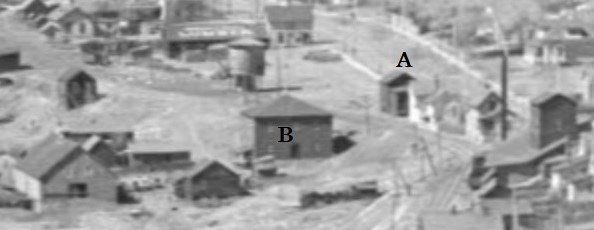 I did some reckoning on this speculation awhile ago(2015), due in part to my own curiosity, and ongoing research on the Idaho Springs Mill district. However these were posted in the C&Sn3Blog. How many views they generated, I have no idea of, and no discussion about it was generated here on the forum, regarding my findings. Exactly how I concluded the location is covered in detail. Part One. https://coloradosouthern.blogspot.com/2015/09/harry-brunks-30-year-old-mystery_11.html Part Two. https://coloradosouthern.blogspot.com/2015/09/harry-brunks-30-year-old-mystery-more.html Eventually I had my suspicions confirmed about the true location of the CONX 8 discharge point and CONOCO dealer location, clearly seen extreme lower right in this Sanborn Postcard. 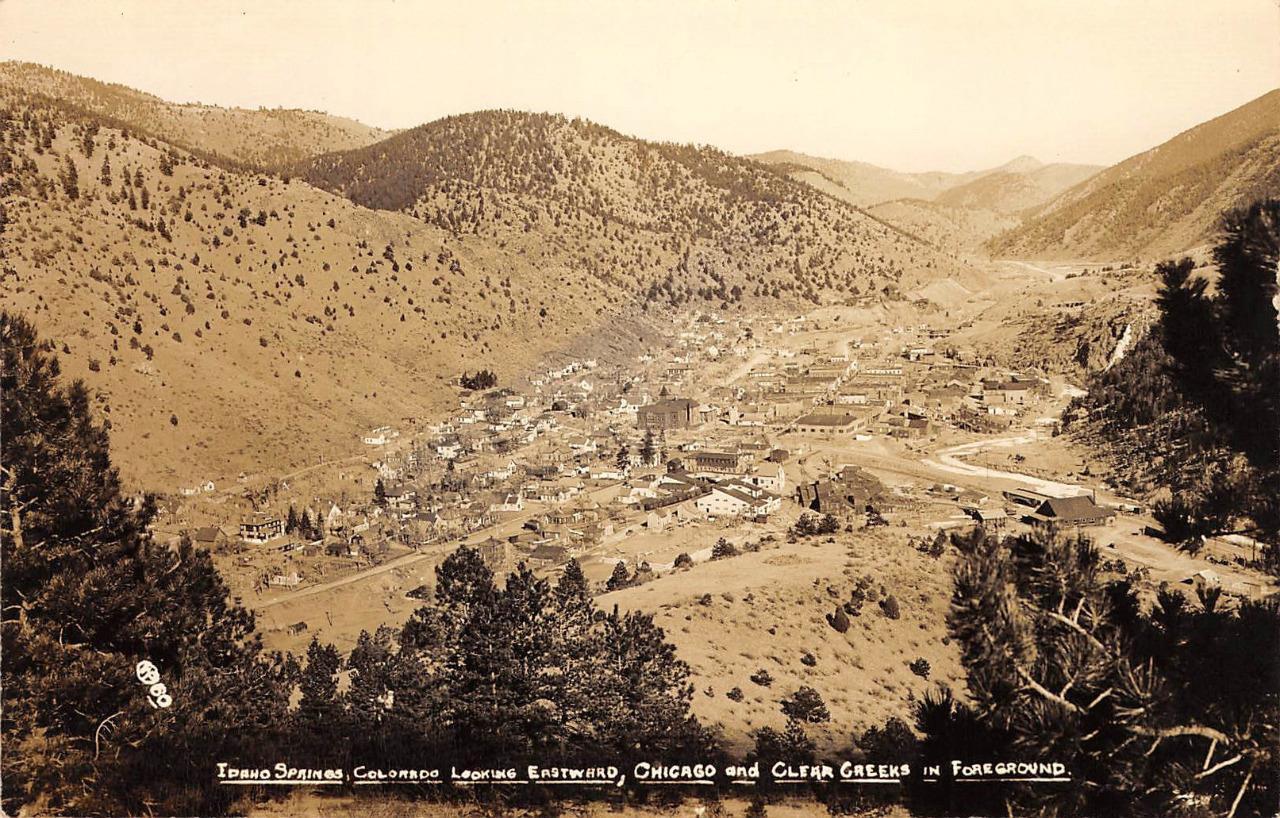 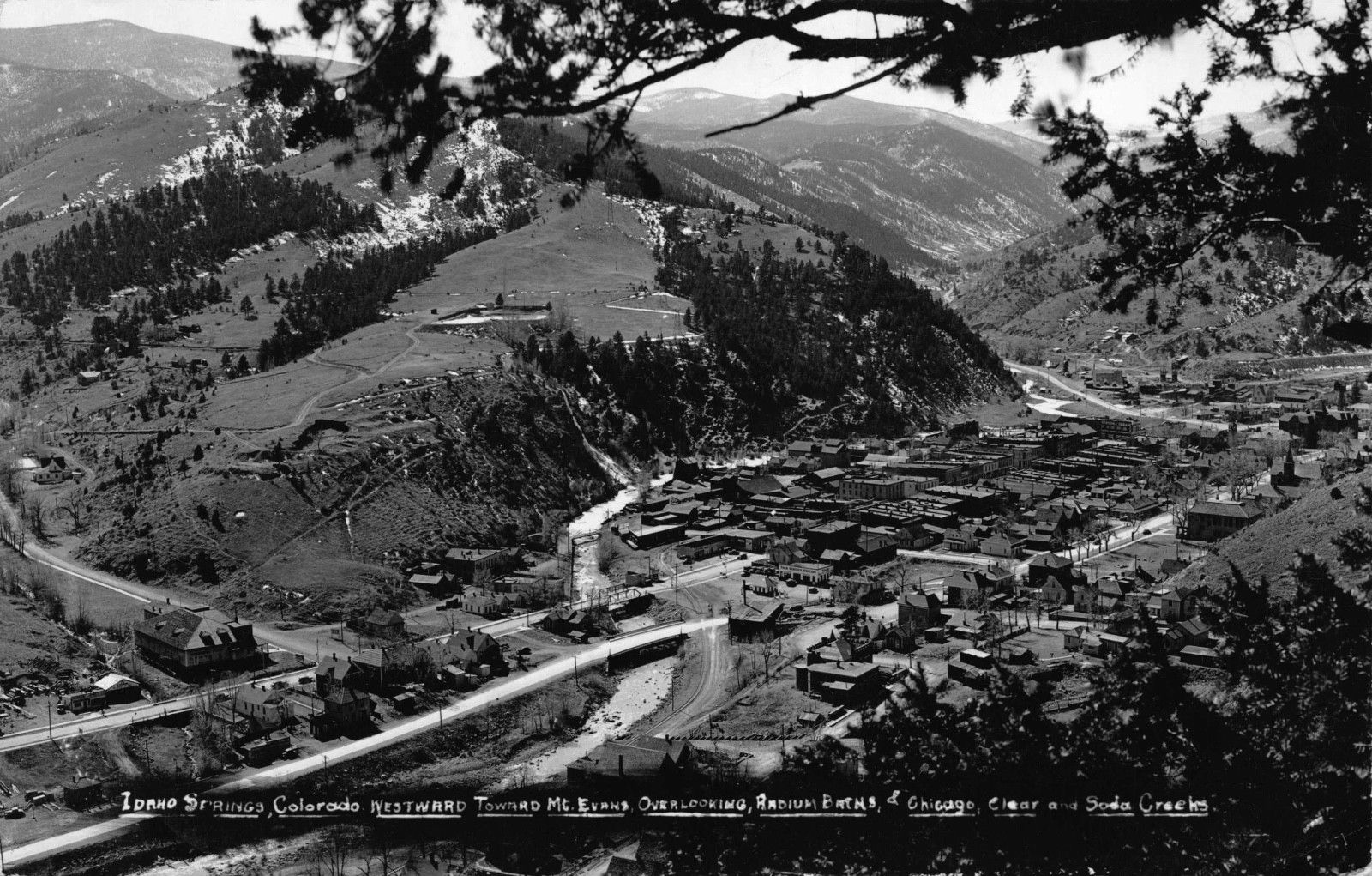 And another repeat view, except a large, black object resembling the CONX8 is visible, spotted in the same proximity to the Orebin seen in the Harry Brunk Gazette article photo. 
UpSideDownC
in New Zealand |
Re: First Decade C&S Lineside Petroleum Tanks . . . and Tank Cars?
|
In reply to this post by Chris Walker
Yes, and dated to 1898, perfect given what the maps are showing. And the New York Mill is in its original configuration before being expanded a year or so later with the elevated Gilpin spur. Well, I'm going to reserve judgement on that find, the caution in me kicking in. But I'll definitely add it to the 1937 Black Hawk switching layout I've been researching and plotting for the last couple of weeks, if I ever do build it! There is an elevated view looking upgrade to the station area a few pages prior to the New York Mill photo, which dates to 1915. The old Gilpin Mill has been expanded to its later size and I note that the hay warehouse is missing. That creates a gap between the left beer warehouse and the mill, a safe place to tuck a tank in perpendicular to the track, if that happened, a decade later.
Dave Eggleston
Seattle, WA |
Re: First Decade C&S Lineside Petroleum Tanks . . . and Tank Cars?
|
In reply to this post by Chris Walker
Hey Chris,
Thanks for finding Derrell's old post--I had a vague recollection of the info, but couldn't find it. So, the three C&S narrow gauge tank on flat conversions (1055, 1066 and 1093) were undertaken to haul locomotive fuel oil to sites on Clear Creek and Platte Canon, for the 1903 summer "smokeless passenger trains". When the whole plan was aborted due to the spike in the price of oil, they were repurposed as water cars. And the standard gauge tank cars 950-961 were purchased for the same purpose--to haul fuel oil from Beaumont, TX, to Denver, via the FW&DC / C&S. Explains the "Oil Tank" markings on the right side of the tank. The new C&S management must of had a sense of urgency in late 1902 to start moving the oil for the coming spring, as Derrell pointed out that the 12 cars were "purchased" (not converted or built in the C&S shops). Up thread, Dave questioned: So is there any chance that CONX provided the C&S with a complete car/tank package? Nothing to support this idea, but it's not impossible.. Since I am still amazed at how much the tank on C&S 953 looks like the Conoco owned tanks placed on later COLX 12, 13 and 15, perhaps this answers Dave's question. When the summer of smokeless moguls was aborted, the 12 standard gauge tank cars remained on the roster, at least through the 1907 ORER. Doesn't rule out their subsequent use hauling consigned bulk products for Conoco throughout the C&S system. Perhaps one was converted to narrow gauge.
Jim Courtney
Poulsbo, WA |
Re: First Decade C&S Lineside Petroleum Tanks . . . and Tank Cars?
|
Jim,
What is the primary source for car 1055? The sources I do have don't give car numbers for any tanks, other than a range of numbers for a quantity of 2-3 cars, until 1907 when 1056, not 1055, is listed in the ORER. And Rudnick also has a reference to 1056, not 1055, likely from the March 1908 ORER. I'd sure love to know the primary source for number 1055 if you've got it. It must also be the source that lists 1097?
Dave Eggleston
Seattle, WA |
Re: First Decade C&S Lineside Petroleum Tanks . . . and Tank Cars?
|
Hey Dave,
I got the tank number 1055 from the paragraph by Derrell Poole in the Narrow Gauge Pictorial VIII, and the ORERs that you sent me: 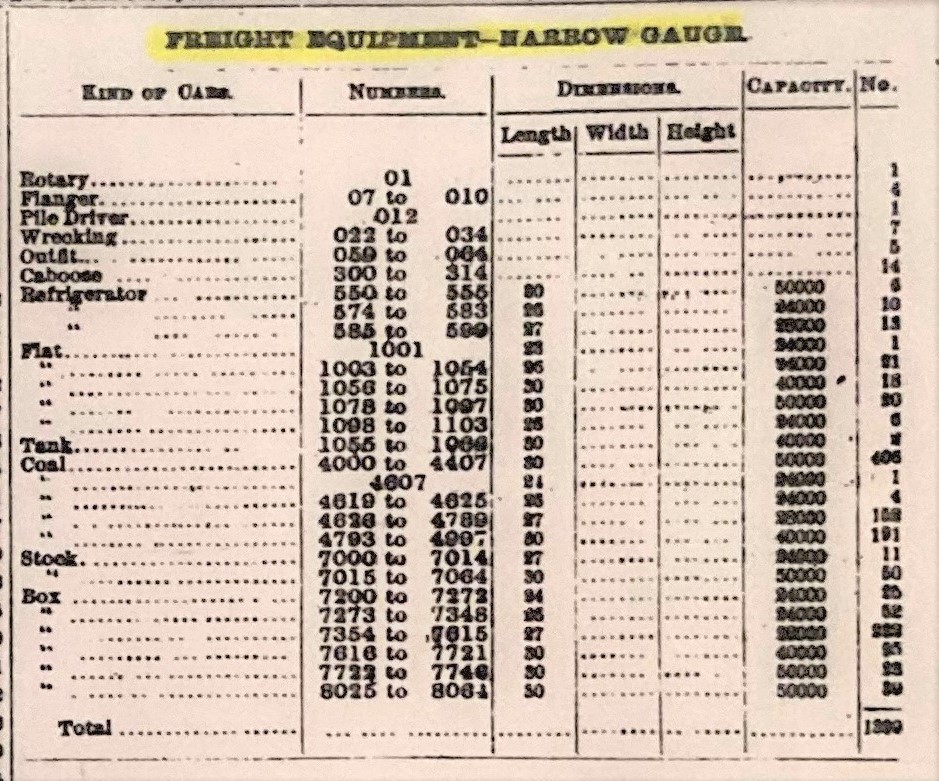 ORER, June, 1903 Since only two cars are listed under quantity, and numbered 1055 to 1066, I interpreted that to mean those were the two cars numbers. Especially since there are still 18 flat cars in the sequence 1056-1075, also 30 foot, 40,000 lb. capacity cars. And 1056 is the first listed. The 1056 as a tank (water) car number in 1907 and 1908 may be a typo. Alternatively, the flat car under 1055 may have gotten worn out or damaged and its tank was removed and in turn mounted on flat car 1056. Notice in the 1907 ORER, 1055 is listed as a flat car again, and only 13 of the series survive. All of the 20 flat cars in the 1055-1075 series were old Peninsular 30' / 20 ton flat cars of 1884, most converted from coal cars. Many had been to Utah and back as part of the "Pocatello Transfer". Here is a pair of sister flat cars, hauling Doug Heitkamp's poles: 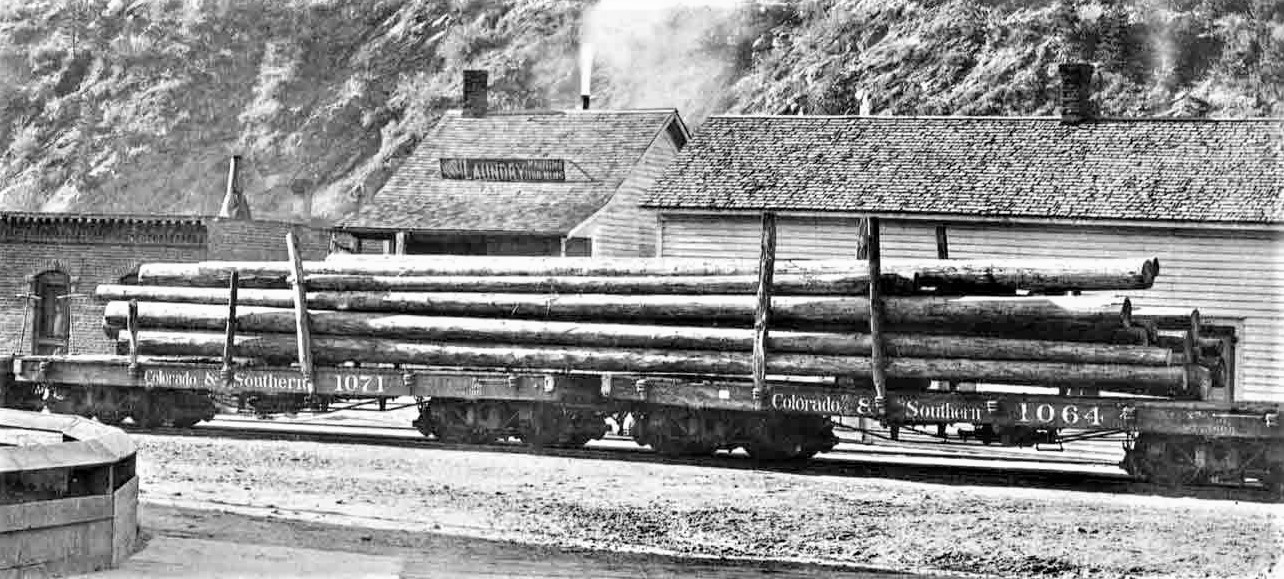 Flat car 1064 still has her original tapered side sills, while 1071 has newer notched, straight side sills from a shopping, likely in the late 1890s. Now, squint your eyes and imagine tanks mounted on both the flat cars, much like CONX 5 in later years.
Jim Courtney
Poulsbo, WA |
«
Return to C&Sng Discussion Forum
|
1 view|%1 views
| Free forum by Nabble | Edit this page |

